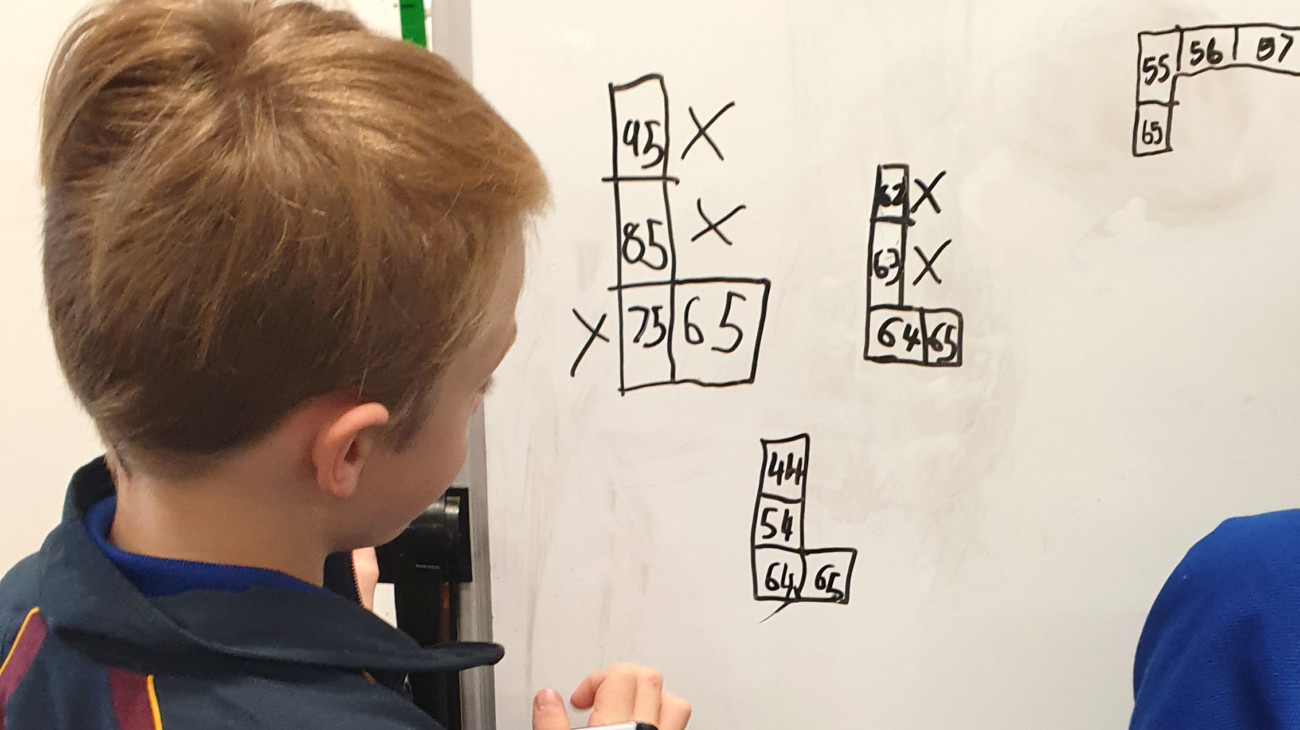Posted Thursday, 17 April 2025
$100 million boost for Scitech to inspire next generation of scientists
Scitech has welcomed the Labor Government’s election promise of a $100 million investment to support a major upgrade.
Year 2 teacher Abi Cook learns the importance of using questions to further develop her students’ understanding of maths.

Hello again and welcome to my second blog post!
My greatest lesson this year has been that questioning is powerful. It can allow a student to: recognise an error; change their thinking; explain and justify their answer; understand the maths more clearly; and extend their thinking beyond just ‘having the answer’. Since my last post, I have really focused on the types of questions I ask my students as they are working through a problem. I have started asking my students direct or guiding questions about what it is they are doing and how this helps them work through the problem. Prior to taking part in the Alcoa Champions of Maths program I didn’t realise the impact a question could have on a student’s mathematical ability and understanding.
When I first began my Alcoa Champions of Maths journey, I often didn’t predetermine questions that I would ask my students after they had the answer and my students didn’t expect me to question their answer. During my first few problem solving lessons, students would eagerly tell me they had the answer and would want me to come and see their solution right away. When I began asking them questions about their work, what strategies they had used, if this would always work and why certain parts of their working out were important, my students seemed a bit shocked and speechless. Many weren’t sure how to answer the questions and I realised this is where a lot of the work needed to be done. Some could answer the problem but asking them to explain their answer to me was tricky, highlighting the fact that they lacked a deeper understanding of the concept or at least a way to articulate their maths skills.
One of my first problem solving tasks with predetermined questions, based on the anticipated solutions from my students, was – I am thinking of 2 numbers on the hundreds chart. One number is 15 more than the other. One of my numbers has a 3 in it. What might my 2 numbers be? Give as many answers as you can.
I predicted that most of my students would select any number with a 3 in it and then count on 15 more to find a solution. And some did do this. However, I didn’t anticipate that my students would struggle with the concept of ‘more than’. They couldn’t identify that adding or subtracting 15 would help them find another number that was ‘more than’.
In the weeks prior to this lesson, we had been looking at numbers that were ‘more than’ or ‘less than’ and most could tell me that 32 is more than 12 or 45 is less than 90. What I hadn’t asked them during those lessons was “How do you know that 32 is more than 12?”, “Can you prove that 45 is less than 90?” or “How many more is 32 than 12?”
After talking them through how we could find 15 more than any number, many students were able to come up with some solutions to the problem. During our discussion, I asked students questions like “How can partitioning 15 into tens and ones help us add more efficiently?”, “When we add 10 are we increasing or decreasing (going up or down) on the hundreds chart?” and “When we add 5, what do we do on the hundreds chart?” Since this lesson and asking these questions, I have observed that many of my students still use the terms ‘increasing’ and ‘decreasing’ and can accurately find the difference in any two numbers on a hundreds chart, which was something they had previously struggled with.
In one of my more recent lessons, students needed to find the total number of squares in this array, in at least 2 different ways.
They could successfully apply different strategies to work out the total number of squares and prove that their answers were correct. Below is a video of me asking one of my students the questions I had prepared for her anticipated solutions. Her ability to give an in-depth explanation of the reasons for her working out and solution is so exciting to see for a Year 2. On a few occasions, she answered questions I had, without me asking them. These are the questions I had prepared for her solutions:
My students now look forward to not only sharing their answer with me, but the way in which they found the answers. I have noticed that some of my students can even predict the questions I might ask them and answer it in their explanation before I ask. This shows me they have extended their maths thinking beyond ‘finding an answer’ to thinking explicitly about the maths and applying different strategies to find multiple solutions.
I have found such value in participating in the Alcoa Champions of Maths program this year and can see the great benefits it has on my students’ ability to problem solve as well as my teaching of problem solving. As more teachers take on this approach for problem solving in our school, I have heard a resounding “My students love problem solving”, with which I concur!
It has been extraordinary to have been a part of such an impactful program this year and I look forward to continue applying this approach and further implementing it within our school in the future.
Upon clicking the "Book Now" or "Buy Gift Card" buttons a new window will open prompting contact information and payment details.